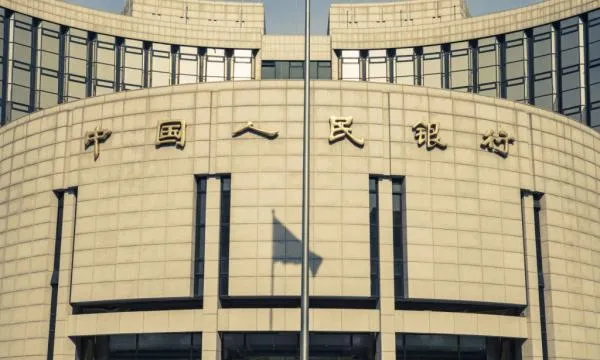
Will regional bank distress threaten China's fragile financial stability?
Failure at the regional level may squeeze funding options for the NBFI sector.
Brewing trouble at the regional bank level poses a wide range of systemic risk to China's fragile financial services sector especially after a spate of credit events highlighted the vulnerabilities of such institutions, according to Moody's Investors Service.
In June, the central bank provided credit enhancement to the issuance of interbank negotiable ceritificates of deposit (NCDs) to Bank of Jinzhou one month after it took over troubled regional bank, Baoshang Bank. In August, sovereign wealth fund Central Huijin Investment Limited and the Shandong provincial government were reported to have been weighing an investment in Hengfeng Bank's equity to boost its capital buffers.
According to Fitch Ratings, there are almost 4,000 small city and rural banks in China which typically have more vulnerable funding and liquidity profiles, larger shadow-financing activities and lower loss-absorption capacity than state banks and larger commercial banks.
Also read: Small Chinese banks struggle to strike balance between curbing risk and lending
Such regional banks have experienced a breakneck pace of growth in assets over a short period of time. Baoshang Bank, for instance, grew from a small regional bank with assets of RMB115b at the end of 2010 to a midsized regional bank with assets of RMB576b by Q3 2017. The Bank of Jinzhou grew from a small regional bank with assets of RMB94b at the end of 2010 to a midsized regional bank with assets of RMB846b at the end of 2018. From a small regional bank in 2011, Hengfeng Bank grew to be a midsized regional bank with assets of RMB1,047b in Q3 2018.
From accounting for 12% of China's total banking assets in 2010, the share of regional banks correspondingly rose to 23% in 2018. Moreover, these entities supplied nearly a fourth (24%) of overall bank credit to the economy in 2018, up from 18% in 2014, data from Moody's show.
Despite their growing importance, the non-performing loan (NPL) ratio of regional banks outpaces that of joint stock banks, city commercial banks and large banks. The share of bad loans held by the regional banking sector surged to 40% by end-2018 from 23% in 2014.
Also read: More bailouts loom as staggering bad loans batter Chinese rural banks
Concerns over operational deficiencies and governance have long hounded small banks who are grappling with tight credit conditions against the economic slowdown and Beijing's unrelenting campaign to deleverage. A stress test conducted by the central bank shows that capital positions across much of the banking sector is vulnerable and Fitch estimates those likely to fall below the minimum thresholds under stress would include most of the city and rural banks, and cover more than 20%-25% of banking-system assets (excluding the policy banks).
"In market-based financial systems, a common pattern is for the failure of one institution to trigger risk aversion toward the sector as a whole or toward other institutions perceived to share similar risk characteristics," Moody's said in a report. "Recent market reforms have increased interconnectedness within the financial sector. The recent episodes involving Baoshang Bank and the Bank of Jinzhou demonstrate the potential consequences for system stability as a result of regional bank distress."
Spillover risk
The potential for spillover risk amidst troubles in the regional bank sector may be magnified in the effect on interbank funding markets, especially since smaller regional banks and NBFIs are net borrowers in the market and heavily rely on wholesale funding (27.5%) compared to other banks.
The issuing rates of NCDs and the share of failed NCD issuance have risen since June. The interbank NCD (three-month) issuing rate for city and rural commercial banks increased by 15 bps and 11 bps, respectively, in the first two weeks of June, compared with May. During the same period, the share of failure in NCD issuance of city and rural commercial banks rose by 13.4% and 11.5%, respectively, compared with May.
Spillover risk may also be felt in the credit markets, especially since smaller regional banks and NBFIs in aggregate hold roughly 15% of corporate bonds traded on the interbank market.
A situation of tightened credit supply may also result from small regional bank distress, especially since lenders have a relatively high proportion of loans to entities with the same shareholders like SOEs and LGFVs. "These linkages are likely to result in weaker credit discipline and more relaxed lending standards if the bulk of the lending is made to related entities, which may be an important source of the banks’ rising NPLs. At the same time, these linkages provide governments with incentives to support smaller regional banks directly or indirectly," said Moody's,
However, financial regulators in China have demosntrated the willingness to step in and rescue lenders in distress through liquidity and solvency support schemes. "The timeliness and effectiveness of the authorities' policy response to distress from the regional bank sector could either magnify or reduce the spillover effects. The ability of the authorities to contain a problem will depend on the speed with which the authorities become aware of the emerging problem and determine whether or not to provide support."


















 Advertise
Advertise








